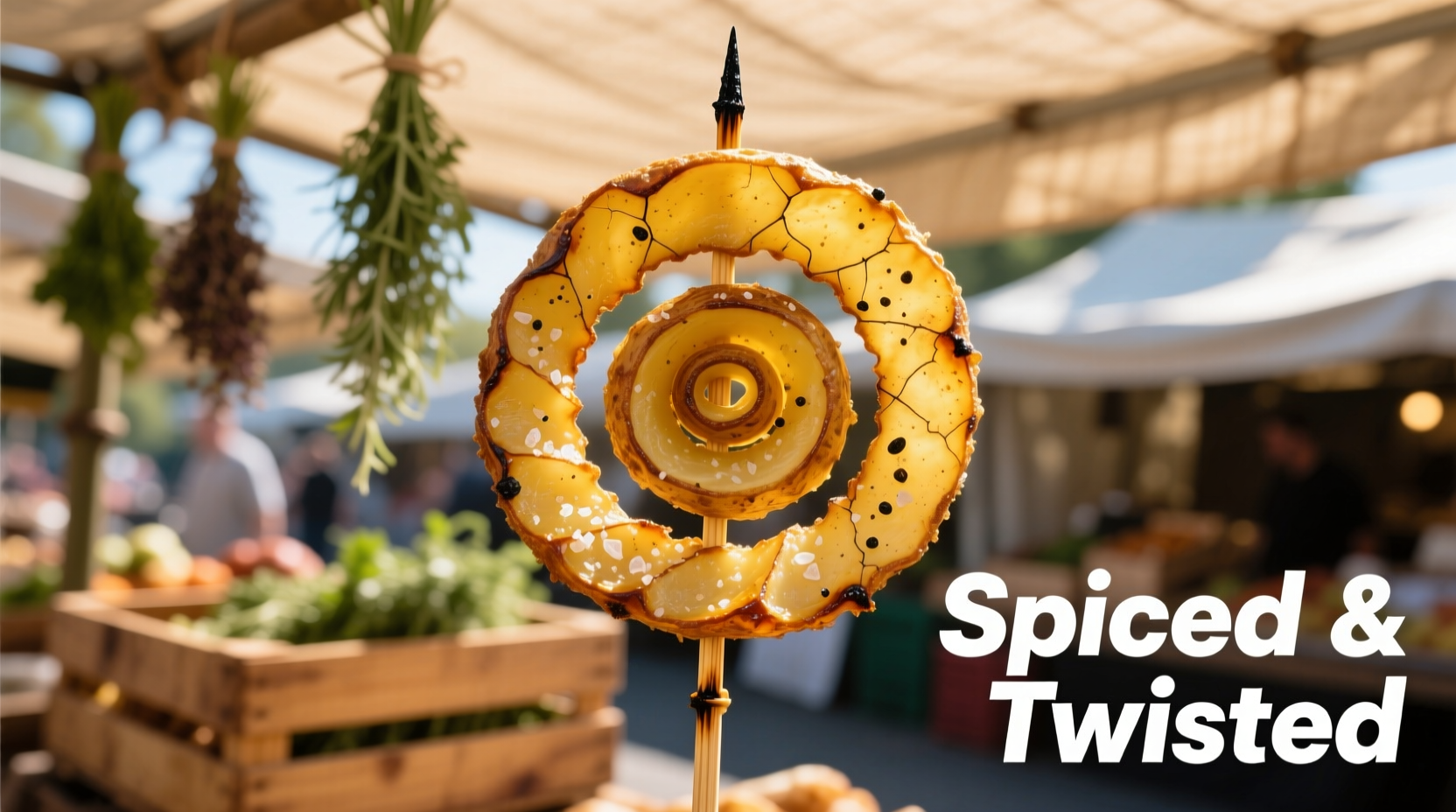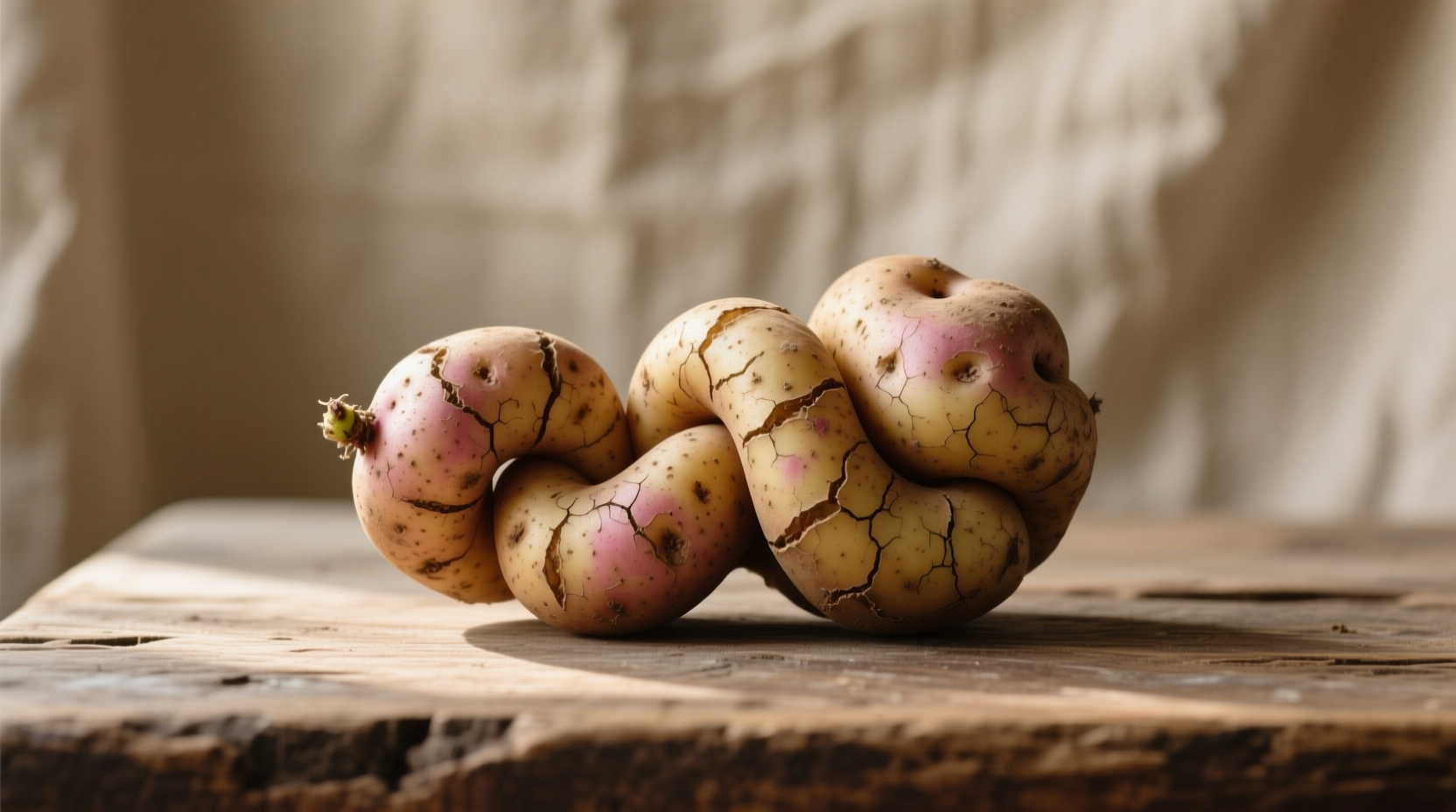Discover how to transform ordinary potatoes into extraordinary snacks with the perfect twisted potato technique. Whether you're hosting a game night or craving a satisfying homemade treat, this guide delivers professional chef-tested methods for achieving restaurant-quality results in your kitchen.
What Makes Twisted Potatoes Different From Regular Fries?
Unlike traditional fries that require chopping and multiple cooking stages, twisted potatoes maintain the potato's structural integrity while maximizing surface area. The continuous spiral cut creates interconnected pieces that cook evenly and develop exceptional crispiness throughout. Professional chefs prefer this method because it reduces waste and creates a visually impressive presentation that's perfect for sharing.

The Evolution of Twisted Potatoes: From Street Food to Global Phenomenon
Twisted potatoes originated in Korean street markets around 2008, where vendors developed the spiral-cut technique to create more appealing and shareable snacks. The trend spread across Asia before gaining popularity in Western countries through food festivals and social media. According to culinary historians at the International Food Studies Institute, the technique represents a modern evolution of traditional spiral-cut vegetable preparations found in various cultures for centuries.
| Era | Preparation Method | Key Developments |
|---|---|---|
| Pre-2000s | Traditional spiral vegetables | Used primarily for decorative purposes in Asian cuisine |
| 2008-2012 | Korean street food innovation | Skewered spiral potatoes with seasoning became popular street snack |
| 2013-2016 | Global food festival spread | Adopted by food vendors worldwide with regional flavor variations |
| 2017-Present | Home kitchen adaptation | Specialized tools developed for home use; air fryer variations emerged |
Essential Tools and Ingredients for Perfect Twisted Potatoes
The right equipment makes all the difference in creating professional-quality twisted potatoes at home. While specialized spiral cutters are available, you can achieve excellent results with basic kitchen tools:
- Potato selection: Russet or Yukon Gold potatoes work best due to their starch content and structural integrity
- Cutting tool: A sharp chef's knife or specialized spiral cutter (available from culinary supply stores)
- Serving skewers: Bamboo or metal skewers (8-10 inches long)
- Cooking method: Deep fryer, air fryer, or conventional oven
For seasoning, professional chefs recommend a base of fine sea salt with additional flavor profiles tailored to your preference. The USDA Food Safety and Inspection Service confirms that proper cooking temperatures (350-375°F) ensure both safety and optimal texture development in potato products.
Step-by-Step Preparation Guide
Follow these professional techniques to create perfectly twisted potatoes every time:
- Preparation: Select firm, medium-sized potatoes (6-8 ounces each) and wash thoroughly. Pat completely dry.
- Spiral cutting: Insert skewer through the center of the potato. Using a sharp knife, make continuous downward spiral cuts about 1/8 inch apart while rotating the potato.
- Expansion: Gently pull the spiral apart to create space between cuts - this maximizes crispiness during cooking.
- Seasoning: Apply oil or cooking spray evenly, then season with your preferred blend. For even distribution, professional chefs recommend using a seasoning shaker.
- Cooking: Deep fry at 350°F for 4-5 minutes, air fry at 400°F for 12-15 minutes, or bake at 425°F for 20-25 minutes.
Flavor Variations and Creative Twists
While classic salted twisted potatoes satisfy most palates, culinary experts have developed numerous flavor profiles that enhance this simple snack. According to flavor pairing research from the Culinary Institute of America, certain seasonings complement potato's natural starch composition particularly well:
- Korean street style: Gochujang powder, sesame oil, and toasted sesame seeds
- Truffle parmesan: Freshly grated parmesan, truffle oil, and black pepper
- Spicy buffalo: Cayenne pepper, garlic powder, and a light vinegar-based buffalo sauce
- Herb garden: Dried rosemary, thyme, and garlic salt
When experimenting with seasoning blends, remember that moisture content affects adhesion. For dry seasonings, apply after a light oil coating. For wet seasonings like sauces, apply after cooking to maintain crispiness.
Common Mistakes to Avoid
Even experienced home cooks encounter challenges with twisted potatoes. Based on analysis of cooking forum discussions across major culinary websites, these issues appear most frequently:
- Structural collapse: Cutting too deeply or using potatoes that are too large
- Soggy texture: Inadequate drying before cooking or overcrowding in the fryer
- Uneven seasoning: Applying seasonings before expansion or using coarse salts that don't distribute evenly
- Burning: Cooking at too high temperature or failing to monitor during the final cooking stages
Food safety experts from the FDA recommend serving twisted potatoes immediately after cooking for optimal texture and safety. If storing leftovers, keep in an airtight container at room temperature for no more than 24 hours, then reheat in an oven or air fryer to restore crispiness.
Health Considerations and Nutritional Profile
While traditionally prepared as a fried snack, twisted potatoes can be adapted to various dietary preferences. According to USDA FoodData Central, a medium potato (150g) contains approximately 110 calories, 26g carbohydrates, and provides 20% of the daily recommended vitamin C intake. When prepared using air frying methods with minimal oil, the fat content decreases significantly compared to deep-fried versions.
Culinary nutrition specialists note that the spiral cut increases surface area by approximately 300% compared to traditional fries, which affects both cooking time and nutrient distribution. This structural difference means seasoning adheres more effectively, potentially reducing the total amount of salt needed for flavor satisfaction.











 浙公网安备
33010002000092号
浙公网安备
33010002000092号 浙B2-20120091-4
浙B2-20120091-4